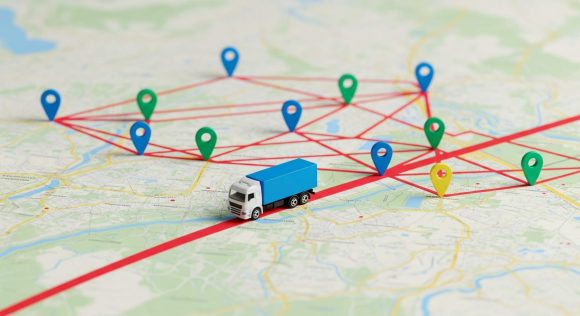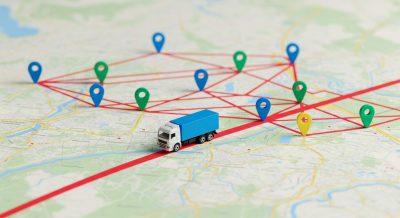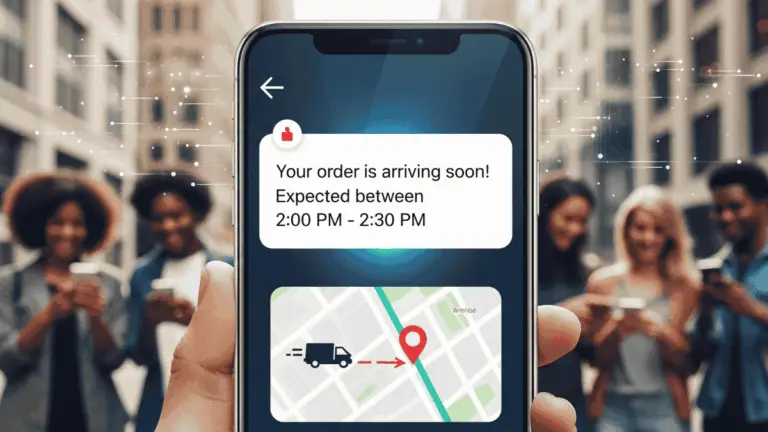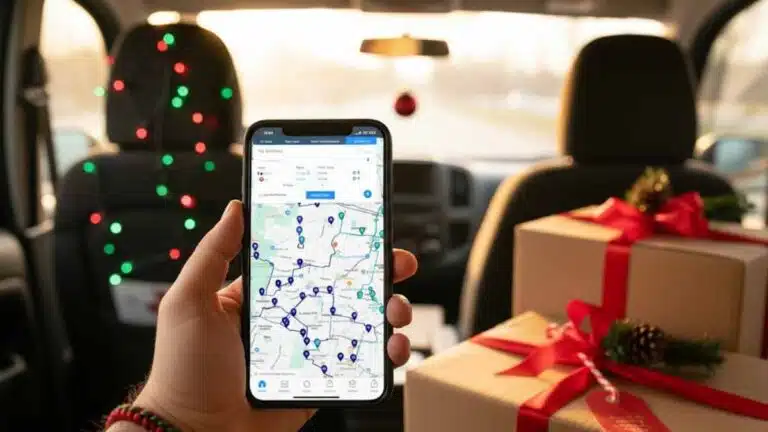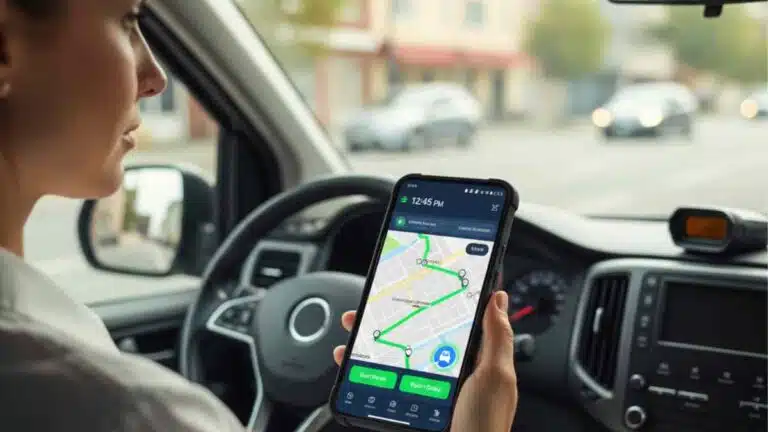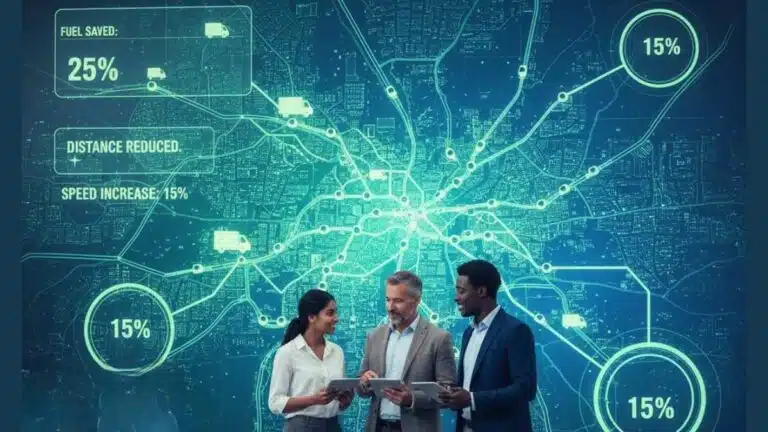Every delivery business hits the same wall. You’ve got the orders, you’ve got the drivers, but the routes don’t add up. Too many kilometres wasted. Too much fuel burned. Customers tapping their feet, waiting for a late drop-off.
That’s where vehicle route optimization comes in. It’s not fancy jargon. It’s just the process of finding the smartest path for your fleet. No guesswork, no messy spreadsheets, no hoping traffic clears by itself.
Sounds simple, right? The tricky part is scale. One van with ten stops is easy enough. Ten vans with hundreds of stops? That’s where smart routing tools earn their keep.
Let’s break it down.
What is Vehicle Route Optimization?
Vehicle route optimization is exactly what it says on the tin. It’s software or a system that figures out the fastest, most efficient way for vehicles to complete deliveries.
It accounts for more than just distance. Traffic, delivery windows, driver schedules, and even vehicle type play into the calculation. The goal is to do more with less. Less fuel, less time, less stress, less drama!
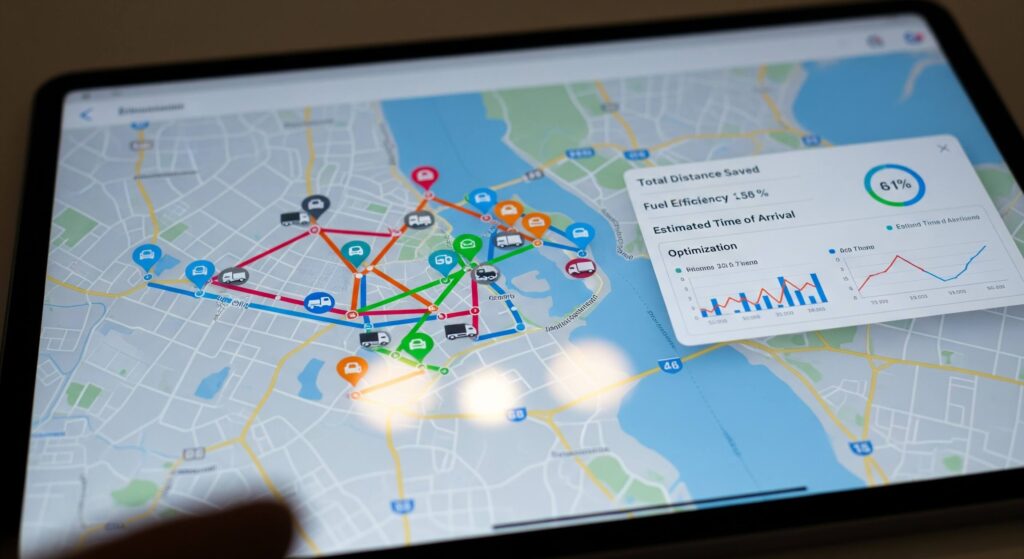
Without optimization, dispatchers often rely on gut feel or static routes. That might work in small towns. But in metro areas like Sydney or Melbourne, it’s chaos without a system keeping it in check.
Why Businesses Need It
The obvious reason? Money. Every unnecessary kilometre is fuel wasted and hours lost.
But it’s also about customer experience. People don’t just want their parcels fast. They want predictability. A live ETA, a tracking link, and the confidence their package isn’t sitting idle in a depot.
Then there’s the bigger picture. Fleet efficiency means fewer vehicles on the road, fewer emissions, and fewer stressed drivers. It’s good for margins and good for your reputation.
How Vehicle Route Optimization Works
Route optimization (also known as vehicle route optimization) is when a business uses technology and software to work out the most efficient routes between multiple locations. The process saves on time and costs, like fuel consumption.
It actually starts at order placement. As soon as the job or online order hits the system, the software gets to work.
How Vehicle Route Optimization Works
First, orders are grouped based on location, delivery time, and priority. Routes are then created with algorithms that can process thousands of possible combinations in seconds.
The software will take various factors into consideration, such as traffic delays and weather conditions. It also continues to optimize in real-time, since those factors can change.
Drivers then get their assigned route, usually via a driver app. As they move, real-time GPS feeds data back to the system. If traffic builds up or a stop gets cancelled, the route adjusts automatically.
That’s the short version. Behind the curtain, it’s serious math. But for businesses, the experience feels simple and seamless.
Why You Should Care About Vehicle Route Optimization
Let’s call it what it is. Vehicle route optimization pays for itself, since it solves a lot of problems and saves your business money.
Just take fuel costs, for example. Fuel consumption drops when vehicles take smarter paths. And no long unnecessary routes means less wear-and-tear on the vehicle.
Delivery times improve when drivers aren’t stuck in gridlock; they actually get to their customers when they say they will. Customers also complain less when they can see accurate ETAs.
Another benefit? Support tickets shrink. Those pesky “Where is my order?” (WISMO) calls fall off because customers know where their parcels are! They can follow the route live, in real-time.
This also means repeat orders will climb because reliability builds trust. And let’s not forget, happy customers leave glowing reviews!
ALSO READ: Delivery Fails: How to Turn Bad Reviews into Customer Loyalty
And for the finance team, one line item is all that matters: cost per delivery. With optimization, that number heads in the right direction.
Common Roadblocks (and Fixes)
No tech rollout is perfect. Vehicle route optimization has its own growing pains.
Data quality is the first hurdle. If addresses are messy or incomplete, the system struggles. Clean data in equals clean routing out.
Buy-in from drivers is another roadblock…. If drivers don’t trust the app or refuse to follow optimized routes, the whole thing collapses.
Training and feedback loops will convince them. You’ll need to show drivers and support staff how this tech can make their jobs easier.
Then there’s scaling. A system that works for five vans can buckle under 50. Or a 100.
ALSO READ: How to Plan and Dispatch 100 Deliveries a Day Without Hiring More Drivers
That’s why businesses need platforms designed to grow with demand, not just handle what’s on the road today.
What the Future Looks Like
Vehicle route optimization isn’t going anywhere. If anything, it’s becoming table stakes.
According to Fortune Business Insights, the global vehicle route optimization market will grow from $15.31 billion to $32.05 billion within the next 7 years.
The report explains that this growth is due to the “increased volume and consumer expectations” of the expansion of e-commerce.
“The exponential rise in e-commerce, especially post-COVID, has dramatically increased the volume of daily deliveries. Companies are required to handle high-frequency and low-volume delivery efficiently.”
And this is true because retail giants like Amazon have normalized same-day and next-day delivery. Customers now expect it. Companies that can’t deliver lose out to those that can.
We’re also seeing new layers get added in.
- Electric vehicle range planning.
- Sustainable routing that minimises emissions.
- Predictive models that adjust routes before a traffic jam even happens.
In short, optimization will get smarter. Businesses that adopt early will have the edge when customer expectations climb even higher.
Final Word on Vehicle Route Optimization
Vehicle route optimization sounds like it’s all about fancy features, but no. It’s about getting parcels from A to B in the smartest way possible.
It saves fuel, cuts costs, keeps customers happy since they can see the parcel movement thanks to real-time tracking, and it helps fleets handle more without burning out.
The question isn’t whether you need it. It’s whether you can afford not to.
About the author
Cheryl has contributed to various international publications, with a fervor for data and technology. She explores the intersection of emerging tech trends with logistics, focusing on how digital innovations are reshaping industries on a global scale. When she's not dissecting the latest developments in AI-driven innovation and digital solutions, Cheryl can be found gaming, kickboxing, or navigating the novel niches of consumer gadgetry.

